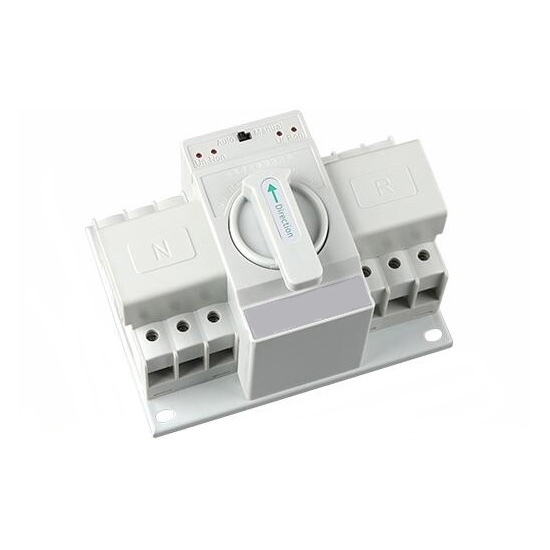Automatic Transfer Switch Basics: Funtions, Advantages and Selecting Principle
Sun, Jun 05 by ATO.com
An automatic transfer switch (ATS) is a device that automatically transfers a power supply from its primary source to a backup source when it senses a failure or outage in the primary source. The auto transfer switch has advantages of simple structure, easy & reliable operation, no noise, small impact, and long service life. Auto changeover switch is suitable for the illuminating circuits of commercial buildings, shopping mall, banks, and high-rise buildings where the power supply can not be cut off for a long time.
Functions of automatic transfer switch
- Basic function - dual power conversion
A transfer switch is defined as an appliance that converts one or several load circuits from one power source to another; an automatic transfer switch appliance (ATS) is: consists of one (or several) transfer switch appliances and other necessary appliances, An appliance used to monitor power circuits and automatically transfer one or several load circuits from one source to another. That is to say, between the two power supplies, choose one that meets the standard to continuously supply power to the load, which is the most basic function of ATS. - Additional features—protection features
ATS automatic transfer switch is divided into two types: PC level and CB level. PC level only completes the basic function of ATSE - dual power conversion; and CB level ATSE is also given the function of overcurrent (short circuit) protection in addition to the conversion function. In fact, CB Level ATSE is a kind of product clarification and stereotype that used dual circuit breaker combination to complete the power conversion function in the past.
Advantage of automatic transfer switch
Transfer switches are a great help to your business, increasing security and productivity. When you choose the right switch to meet your needs, you will get:
- Power reliability: If you can't get electricity for any reason, your business is in trouble. While a generator can alleviate this somewhat, without a transfer switch, you'll have to manually connect the generator to the operation you wish to resume. Not only does this work take up a lot of time and cause downtime, but it also limits the functionality of the generator.
- Safety: Handling any power source can have harmful results. Employees can be harmed by sudden power outages, and dealing with manual generator connections can be catastrophic - especially in the dark! The transfer switch handles all your needs on its own, completely eliminating the dangers associated with power outages.
- Simplified operation: When the automatic transfer switch is installed, the specific operation of the automatic power supply will be selected. This can be everything from your lights to HVAC systems, industrial equipment and even refrigerators. This process greatly simplifies restoring power and improves generator functionality.
Basic principles for selecting automatic transfer switch
- The indicators that need special attention when selecting models are: rated short-circuit making and breaking capacity of CB-class ATS.
- In principle, the ATS automatic transfer switch is not used as a short-circuit protection device, but only as a power automatic transfer switch.
- The rated current of the ATSE should be greater than or equal to the rated current of its upper air circuit breaker.
- Determine the switching method according to the nature and different uses of each power supply: automatic switching and automatic recovery, automatic switching and non-automatic recovery.
- According to the nature of each power supply, the priority power supply is designated, and the priority power supply is not designated; and related functions such as overvoltage and undervoltage detection, frequency detection, phase loss detection, communication interface, electrical and mechanical interlocking, continuously adjustable delay conversion, etc. are determined. , which can realize automatic, remote, emergency manual control, etc.

